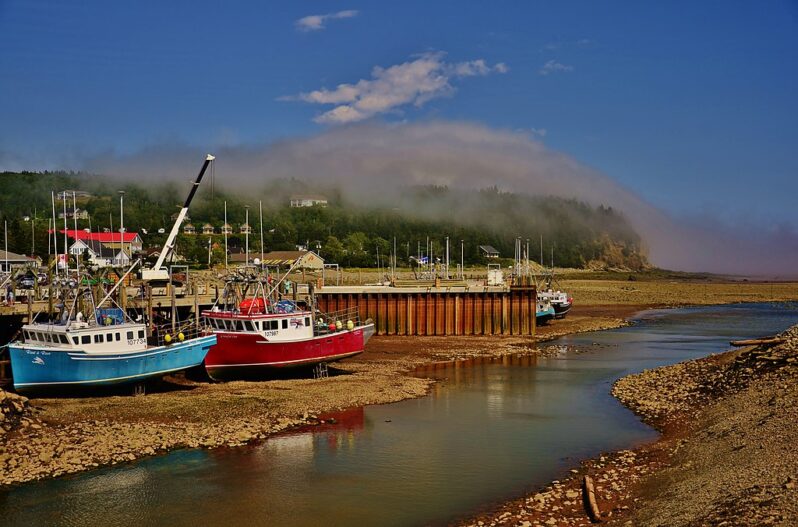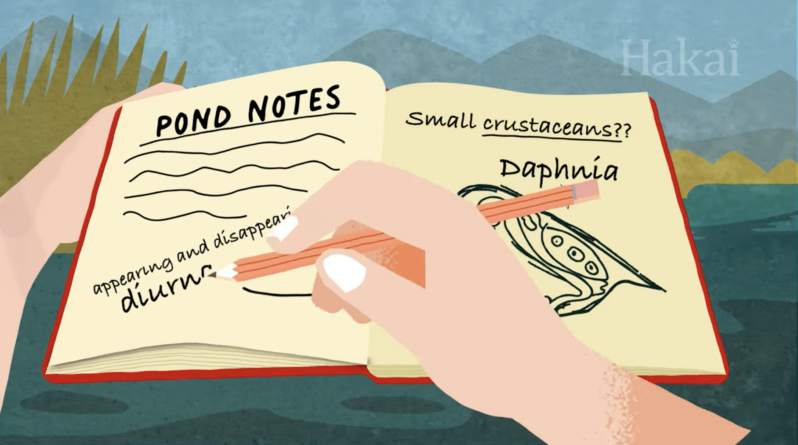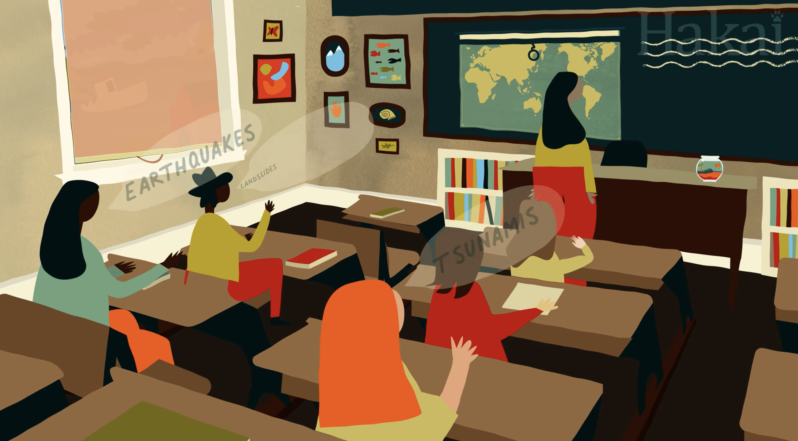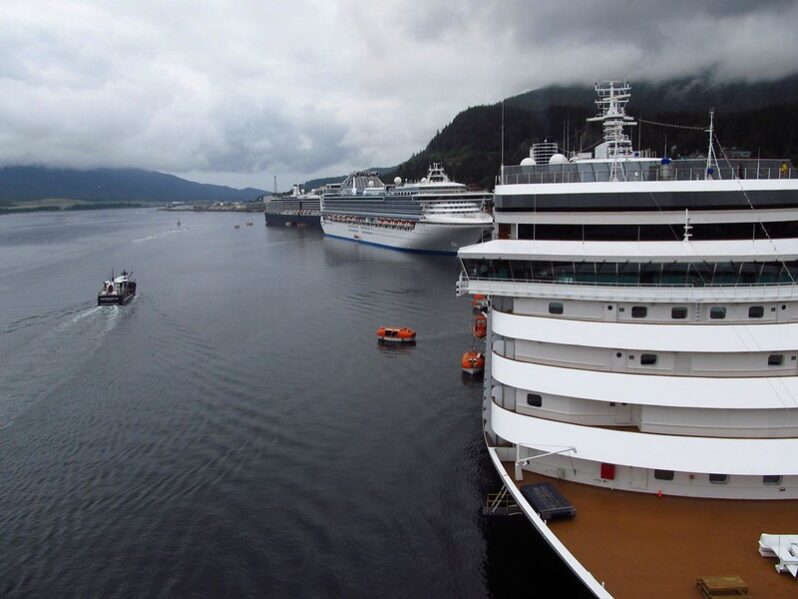Rising Sea Levels Will Isolate People Long Before They’re Underwater – Hakai Magazine

Time and tide wait for no man. Neither does sea level rise. The Chignecto Isthmus—the low marshy strip connecting New Brunswick and Nova Scotia—may be one of the most vulnerable places in Canada to sea level rise. At just 21 kilometers wide, the interprovincial land bridge is battered on its southwestern flank by the famously extreme tides in the Bay of Fundy. Protected by a network of earthen dikes first constructed in the 1600s, “the tops of the dikes are only a little higher than the spring high tides,” says Jeff Ollerhead, a coastal geomorphologist…“If we have a big storm,” he says, “water will go over the dikes.”
Long Story Shorts: What is the Biggest Migration on Earth? – Hakai Institute

Every day, trillions of animals in the ocean play the biggest game of hide-and-seek … and the losers get eaten. This daily commute is called diel vertical migration, and you’ve probably never heard of it—until now….
Bleaching, It’s Not Just for Corals – Hakai Magazine

Giant clams suffer similar struggles with warming water, though the consequences don’t seem quite as dire.
Bleaching occurs when a stressed marine creature, most commonly a coral, expels its symbiotic algae and turns a ghostly white, often in response to a warming sea. But bleaching affects more than just corals. Giant clams—massive mollusks that can grow more than 1.2 meters in diameter and weigh as much as 225 kilograms—can bleach, too. And in recent research, scientists have learned more about how bleaching disrupts these sessile giants, affecting everything from their nutrition to their reproduction…
Long Story Shorts: What is a Coastal Geohazard? – Hakai Institute

Life can be pretty hazardous if you live on the coast—on top of wild weather events like hurricanes and tropical storms, you might find yourself in the middle of geological hazards like earthquakes, tsunamis, and landslides. But did you know that one geohazard can domino into another, creating a cascade of chaos?…
Cities Are Rapidly Reclaiming Land at Risk of Extreme Sea Level Rise – Hakai

As the sea rises and the population booms, builders around the world are in a race to transform coastal bays and shallow seas into new land. Yet don’t mistake this rush of land reclamation as a response to the challenges we face. “It’s built for rich people,” explains Dhritiraj Sengupta, a physical geographer at England’s University of Southampton. Sengupta’s latest research shows there’s been a huge increase in the use of reclaimed land for luxury hotels, shopping areas, and high-end living spaces—developments designed to boost a city’s global reputation…
Microworlds: Bugs on the Rocks – Hakai Institute

If you thought sand was tough enough for insects, meet the bugs that make a living on British Columbia’s rocky seaside, where conditions swing wildly between extremes. One moment, they could drown. The next? Get baked in the sun. But certain strange-looking creatures have adapted to life on the edge here…
Long Story Shorts: What’s the Deal with Bioluminescence? – Hakai Institute

Lots of organisms in the ocean can glow. But what is bioluminescence? And how is it used?
Cruise Ship Invasion Interactive Feature – Hakai

Elizabeth Burton, a Seattle-based activist with the organization Seattle Cruise Control, calculated that the total climate impact of a typical Alaska cruising season, beginning and ending in Seattle (including flights), is equivalent to one-third of the city’s entire annual carbon emissions…After a one-year pandemic pause and a limited season in 2021, cruises to Alaska resumed and surged in popularity in 2022…an estimated 700,000 passengers will depart Seattle, Washington, on hundreds of different cruises. These travelers voyage on increasingly massive ships—some about three sport fields in length—that can house, feed, and process the waste of upward of 4,000 human beings…
How Will Creatures That Can Barely Move Handle Climate Change? – Hakai Magazine

As the world warms, animals living near the coast are being battered by stronger storms, rising seas, and extreme temperatures. While fish, birds, and other species might be able to escape—often toward the poles—many marine creatures can barely move, let alone speed out of the way.
Scientists have long known that on hot days more mobile shoreline creatures like crabs take steps to control their body temperature by scuttling into cool crevices…
